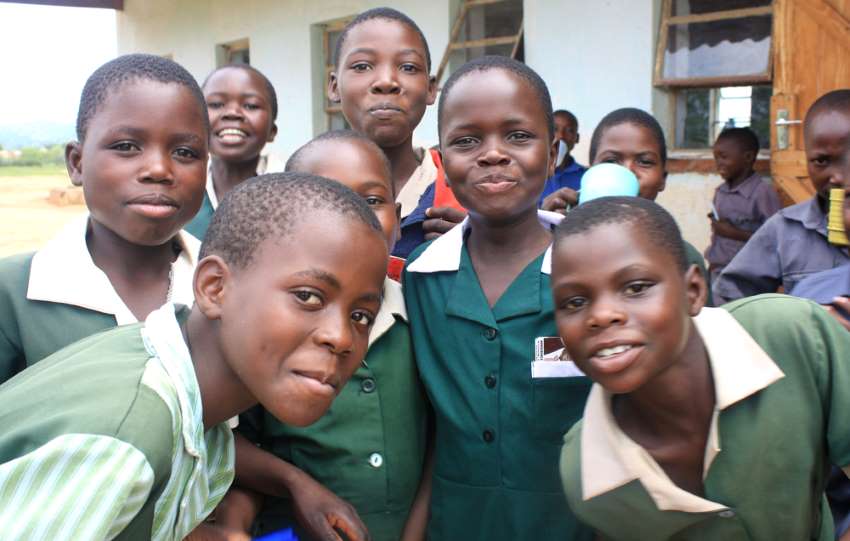
Credit: UNICEFZimbabwe/2020/Tsvangirayi Mukwazhi
A new report by an anti-drug and substance abuse group has noted a sharp rise in alcohol, drugs and other substances abuse with 70% of gang violence reported among school children; 15% of Intimate Partner Violence (IPV) and Gender Based Violence (GBV) cases involve adolescents and young people
The Youth Advocates Zimbabwe (YAZ) study revealed more disturbing patterns directly attributable to ADS abuse; 40% of suicide attempts are linked to ADS abuse; and an increase in school dropouts with 60% having dropped out of school after being expelled for ADS abuse.
To understand the root causes of drug consumption and substance abuse amongst Zimbabwean adolescents and youth, and to inform programming, UNICEF in collaboration with Government of Zimbabwe, Muthengo Development Studies (MDS), Zimbabwe Civil Liberties and Drug Network (ZCLDN), and Youth Advocates Zimbabwe (YAZ), synthesized existing evidence and identified gaps to strengthen current responses. This research brief summarizes the findings and recommendations for all stakeholders.
Further evidence was provided by YAZ through its Helpline Contact Center #393 to locate children and young people in crisis, link them to critical services, and track barriers to services. YAZ analysed drug use causes and casualties.
In March 2023, UNICEF hosted a meeting with the authors of these studies, including substance abuse experts. The findings were informative, comprehensive and contributed to this publication.
The report notes that the root drivers of alcohol, drugs, and other substances abuse:
(i) Death of parent(s);
(ii) Poverty and idleness;
(iii) Absent parents
(iv); Broken homes;
(v) Inadequate parenting practices;
(vi) Social influence;
(vii) Stress;
(viii) Deviant behaviour traits; and
(ix) Experimentation.
• Structural (laws, policies, culture etc.) and behavioral barriers: These factors were identified as leading to high-risk behaviors (knowledge, skills, beliefs etc.).
• Social norms: Alcohol, drugs and other substances consumption is considered ‘normal’ for males, more than it is for females.
IV. Measures taken by the Government of Zimbabwe
Government has established an inter-ministerial committee with five pillars to address the Alcohol Drugs and Substance abuse problem, under the leadership of the Ministry of Defense:
• Establishment of a Supply Reduction Pillar, chaired by Office of the President and Cabinet (OPC). Members are drawn from Home Affairs, Finance, Justice, and Attorney General’s Office. The mandate of this Pillar is to reduce and eliminate the availability of drugs in the market and society. Activities focuses on law enforcement.
• Establishment of Demand Reduction Pillar chaired by Ministry of Youth. It focuses on public awareness – informing and educating people about the dangers of drugs. It also supports vocational skills training to address idleness.
• Establishment of a Harm, Reduction, Treatment and Rehabilitation Pillar chaired by the Ministry of Public Service, Labor and Social Welfare’s (MOPSLSW). It aims at reducing the fatal consequences associated with drug use.
• Establishment of a Community Reintegration Pillar chaired by the MOPSLSW’s Department of Social Development. Interventions include activities linked to Social Behavioral Change (SBC) such as Parenting clubs. Funding is from Treasury, and there is dedicated staffing for the programme/section in the Department of Social Development.
• These activities are supported by Media and Communications interventions led by the Ministry of Information, Publicity & Broadcasting Services.

Proposed actions
To prevent drugs and substance abuse among Zimbabwean adolescents and young people, the research findings suggest the following actions/measures:
The development of a multi-sectoral framework for a harmonised approach and communication among relevant actors, to address issues related to alcohol, drugs, and other substances abuse.
An increase in public education and awareness campaigns about substance abuse, especially directed at adolescents and young people.
The initiation, through outreach programmes, of social behaviour change interventions.
The establishment of partnerships between schools, communities, and local authorities to promote healthy behaviors among adolescents and the young people.
• The facilitation of high-quality rehabilitation services, which include:
– Life skills training for the young people (both in- and out-of-school) focusing on the vulnerable; and
– Skills development around drug education, and livelihood skills for recovering individuals.
• The decriminalisation of substance abuse.
• A revision and adoption of legal policies to ensure judicial cooperation, such as:
– The Dangerous Drugs Act [Chapter 15:02] and the Criminal Law (Codification and Reform) Act (Chapter 9:23, Section 156).
– The Zimbabwe National HIV and AIDS Strategic Plan (ZNASP) IV 2021-2025.
– The Zimbabwe National Drug Master Plan (2020-2025); and
– The design of protocols and Standard Operating Procedures for drug abusers.











